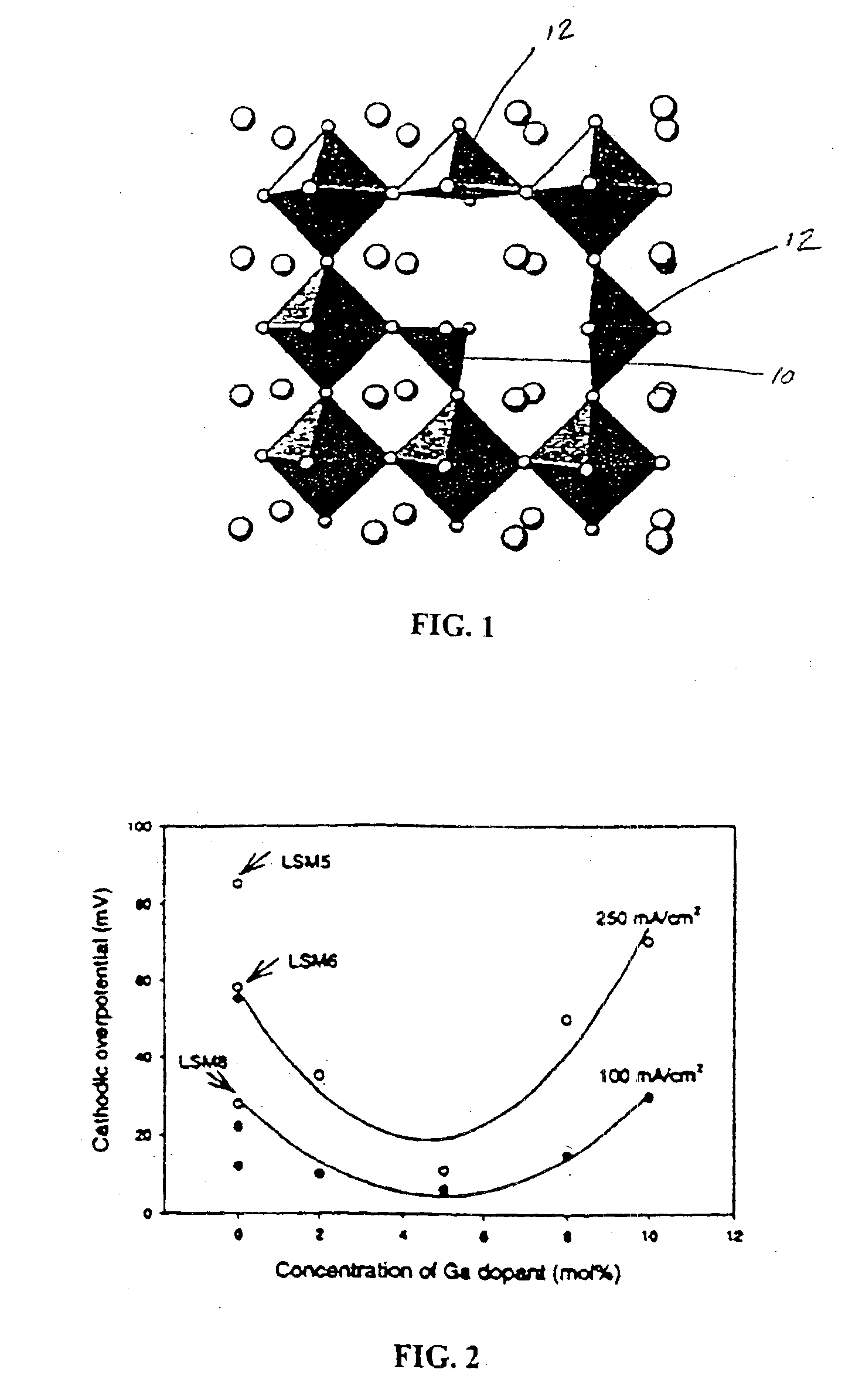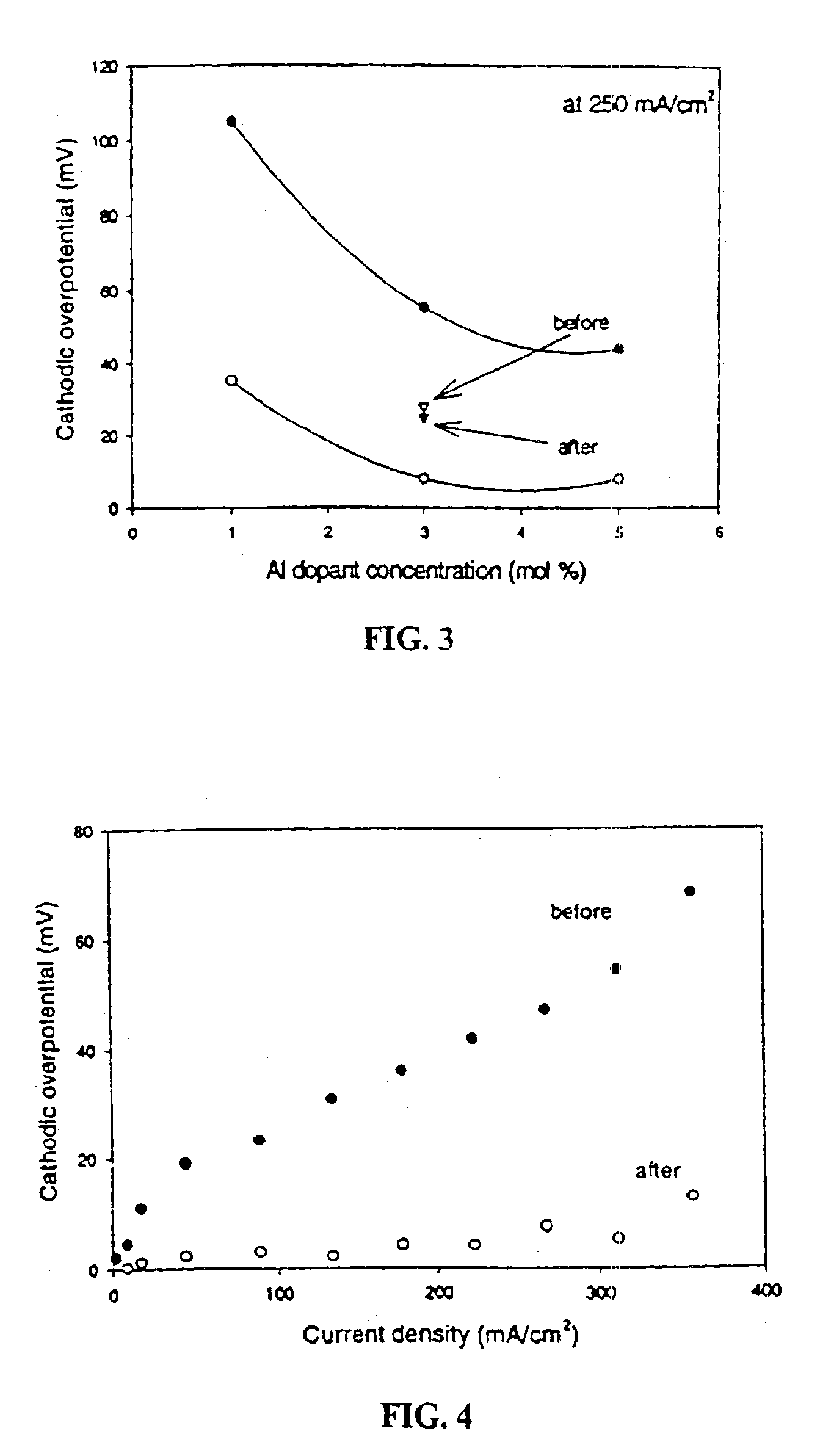Oxygen ion conducting materials
a technology of oxygen ions and conducting materials, applied in the direction of manganates/permanentates, physical/chemical process catalysts, cell components, etc., can solve the problems of poor oxygen ion conductivity, achieve good electrical conductivity and catalytic activity, and enhance the conductivity of oxygen ions.
- Summary
- Abstract
- Description
- Claims
- Application Information
AI Technical Summary
Benefits of technology
Problems solved by technology
Method used
Image
Examples
example 1
[0023]In studying the effect of the addition of a number of cations to material that has a strong tendency for four coordination to LaMnO3, the use of gallium cations was studied as a dopant in this system. Typical materials were synthesized by a glycine nitrate method and subsequently calcined in air at 1250° C. All samples were then screened for activity as a cathode by determining polarization behavior at 1000° C. in air in a half fuel cell arrangement. The ratio of lanthanum and strontium were varied to establish single phase materials, as determined by powder X-ray diffraction, and the amount of gallium doped into the sample was varied. FIG. 2 is a plot of observed overpotential versus gallium concentration. The three points at zero Ga dopant concentration were obtained from the electrode compositions of La0.54Sr0.45MnO3 (LSM5), La0.59Sr0.4MnO3 (LSM6), and La0.79Sr0.2MnO3 (LSM8), respectively. Although overpotential varies with Sr content in LSM without Ga doping, in FIG. 2 it ...
example 2
[0025]FIG. 3 shows the effect of changing the aluminum dopant concentration on the overpotential of the Al-doped LSM cathode at a current density of 250 mA / cm2. The smooth curves in FIG. 3 were obtained using the same material for both the anode and cathode, both before and after current conditioning at 360 mA / cm2 over a week. After long term current conditioning, anode degradation was observed, as indicated by a great increase in the terminal voltage between the anode and its reference electrode. In order to eliminate the effects of the anode degradation, similar experiments were performed using the 3% Al-doped cathode with a platinum anode in a half-cell configuration. The results are shown in triangles in FIG. 3. As can be seen, excellent performance of the cathode is maintained when compared to standard LSM materials (approximately 60 mV) with the alternative anodes.
[0026]FIG. 4 shows a typical example of a polarization curve obtained from the 5% Al-doped LSM cathode before and ...
PUM
| Property | Measurement | Unit |
|---|---|---|
| current density | aaaaa | aaaaa |
| oxygen ion conductivity | aaaaa | aaaaa |
| valences | aaaaa | aaaaa |
Abstract
Description
Claims
Application Information
 Login to View More
Login to View More - R&D
- Intellectual Property
- Life Sciences
- Materials
- Tech Scout
- Unparalleled Data Quality
- Higher Quality Content
- 60% Fewer Hallucinations
Browse by: Latest US Patents, China's latest patents, Technical Efficacy Thesaurus, Application Domain, Technology Topic, Popular Technical Reports.
© 2025 PatSnap. All rights reserved.Legal|Privacy policy|Modern Slavery Act Transparency Statement|Sitemap|About US| Contact US: help@patsnap.com


